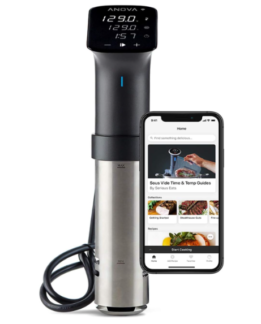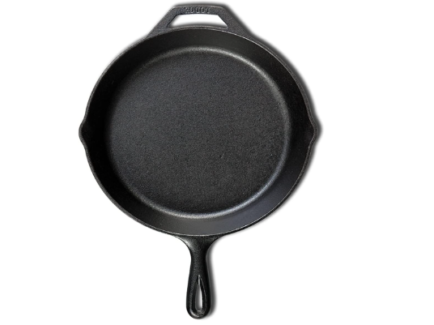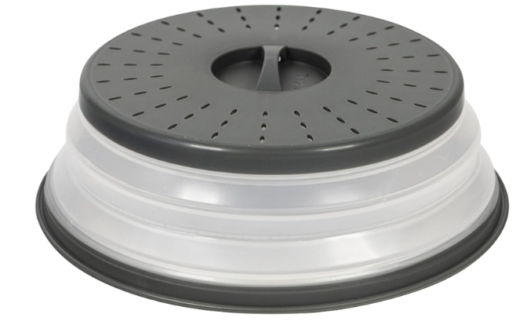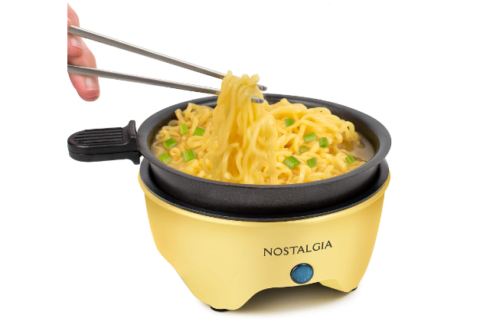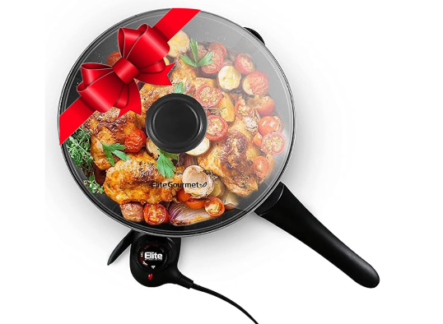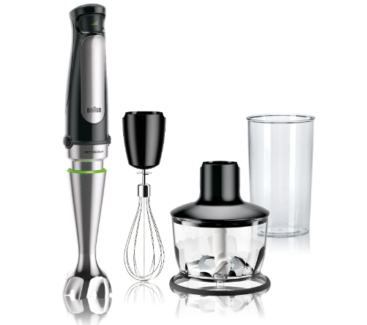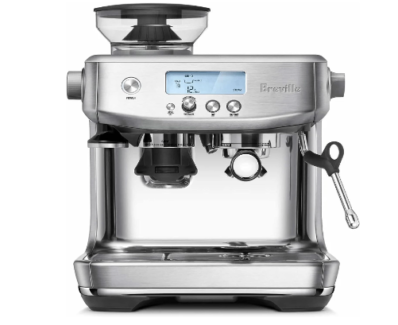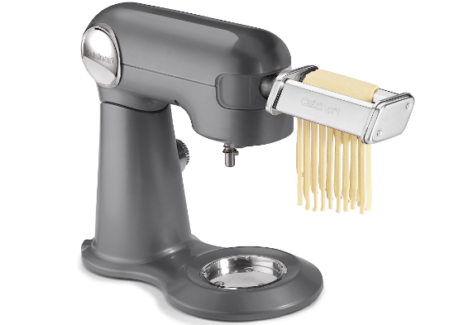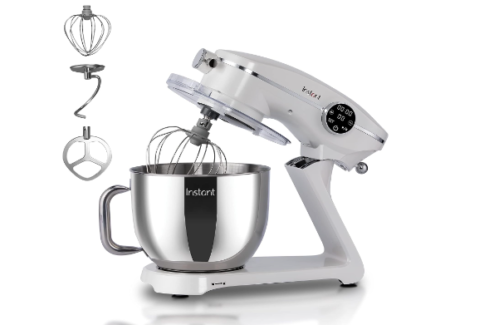A deep fryer is a kitchen appliance specifically designed for...
Read MoreDeep frying a turkey has become a popular cooking method that produces juicy, flavorful meat with a crispy golden-brown skin. It involves immersing a whole turkey into a large pot of hot oil using a specialized deep fryer. Here’s a short introduction to deep frying a turkey:
Deep frying a turkey offers several benefits. First and foremost, it significantly reduces cooking time compared to traditional roasting methods. A deep-fried turkey cooks much faster, allowing you to enjoy a deliciously tender and moist bird in a fraction of the time. Additionally, deep frying creates a unique texture and flavor by sealing in the juices and creating a crispy exterior.
To deep fry a turkey, a specially designed turkey fryer or a large, sturdy pot with a basket is needed. The pot is filled with oil, typically peanut or vegetable oil, and heated to a specific temperature. The turkey is then carefully lowered into the hot oil using a hook or basket attachment. It’s crucial to follow safety guidelines and ensure that the turkey is properly thawed, completely dry, and the oil level is appropriate to prevent dangerous oil splatters and accidents.
Deep frying a turkey requires constant monitoring of the oil temperature to maintain a safe cooking environment. The cooking time varies depending on the size of the turkey, typically ranging from 3 to 4 minutes per pound. It’s important to use a reliable meat thermometer to check the internal temperature of the turkey to ensure it reaches the recommended safe temperature of 165°F (74°C).
While deep frying a turkey can yield delicious results, it’s essential to prioritize safety. Operating a deep fryer requires caution, as hot oil can cause severe burns or fire hazards if mishandled. Always follow the manufacturer’s instructions and safety guidelines, including using the fryer outdoors, away from flammable objects, and keeping a fire extinguisher nearby.
Deep frying a turkey can be a flavorful and impressive way to prepare this holiday centerpiece or any special occasion meal. However, it’s crucial to thoroughly understand the process, follow safety precautions, and use the appropriate equipment to ensure a successful and safe cooking experience.
Tags: butterball turkey fryer, turkey fryer pot,
What is the best deep fryer for turkey?
Choosing the best deep fryer for turkey depends on your specific needs and preferences. However, here are some popular deep fryers for turkey that are highly regarded:
- Butterball XL Electric Fryer: This fryer is specifically designed for turkey frying and can accommodate turkeys up to 20 pounds. It features an adjustable thermostat, a built-in timer, a drain valve for easy oil removal, and a safety magnetic breakaway cord. See more reviews here
- Masterbuilt Butterball XXL Digital Fryer: Another popular option, this fryer can handle turkeys up to 22 pounds. It offers a digital control panel for easy temperature and timer adjustment, a drain valve for convenient oil removal, and a porcelain-coated inner pot for easy cleaning. Click here for more reviews
- Bayou Classic 3025 Turkey Fryer: This outdoor propane fryer is a favorite among outdoor cooking enthusiasts. It comes with a stainless steel stockpot and a burner that can accommodate turkeys up to 18 pounds. It features a sturdy frame, a high-pressure burner, and a reliable thermometer. Many reviews for this product here
- Cuisinart CDF-500 Extra-Large Rotisserie Fryer: This fryer offers a unique rotisserie function, allowing you to cook a turkey evenly while it rotates. It has a large capacity and adjustable temperature control. The fryer can also be used for other cooking methods like frying chicken or roasting. Get more reviews.
- Char-Broil Big Easy Oil-Less Turkey Fryer: This oil-less fryer uses infrared heat technology to cook a turkey without the need for oil. It can handle turkeys up to 16 pounds and offers a simple and mess-free cooking experience. It’s also a popular choice for those looking for a healthier alternative to traditional frying. Customer reviews here
When selecting a deep fryer for turkey, consider factors such as capacity, safety features, ease of use, temperature control, cleaning and maintenance, and your cooking preferences. Read customer reviews, compare features, and choose a fryer that best suits your needs and budget.
Can you put a turkey in a deep fryer?
Yes, you can put a turkey in a deep fryer specifically designed for turkey frying. Deep-frying a turkey has gained popularity as a cooking method that results in juicy, flavorful meat with a crispy skin. However, it’s important to note that not all deep fryers are suitable for frying whole turkeys.
A turkey fryer is a specialized deep fryer with a large capacity and a sturdy construction to accommodate the size and weight of a whole turkey. It typically includes a tall, narrow pot or a specialized fryer kit with a pot, a burner, and a turkey basket or hook for safely lowering the turkey into the hot oil.
When using a turkey fryer, it’s essential to follow safety guidelines and best practices. Here are a few important considerations:
- Thawing: Ensure that the turkey is completely thawed and free of ice or water. Placing a frozen or partially frozen turkey in hot oil can cause the oil to splatter and lead to dangerous situations.
- Drying: Thoroughly pat the turkey dry, both inside and out, to remove any moisture. Excess moisture can cause the oil to splatter and increase the risk of oil-related accidents.
- Oil Level and Temperature: Use the recommended amount of oil specified by the fryer manufacturer, as exceeding the maximum oil level can cause oil spills and fires. Monitor and maintain the oil temperature as instructed, typically around 350°F to 375°F (175°C to 190°C).
- Safe Handling: Lower the turkey into the hot oil slowly and carefully, using the provided turkey basket or hook. It’s crucial to wear protective gloves, long sleeves, and eye protection to minimize the risk of oil splatters or burns.
- Cooking Time: The cooking time for a deep-fried turkey varies depending on the size of the bird. A general guideline is about 3 to 4 minutes per pound (0.45 kg) of turkey. However, it’s important to use a reliable meat thermometer to check the internal temperature and ensure the turkey reaches a safe temperature of 165°F (74°C) in the thickest part of the thigh.
Remember to follow the instructions provided by the turkey fryer manufacturer and adhere to all safety precautions. Deep-frying a turkey can yield delicious results, but it’s crucial to prioritize safety to prevent accidents and ensure a successful cooking experience.
Why do Americans deep fry turkey?
Deep-frying a turkey has become a popular cooking method in the United States for several reasons:
- Flavor and Texture: Deep-frying a turkey results in a unique flavor profile and texture that many people find appealing. The hot oil seals in the juices, creating a moist and tender interior while imparting a crispy, golden-brown exterior. This combination of textures and flavors is highly sought after by turkey lovers.
- Quick Cooking Time: Deep-frying significantly reduces the cooking time compared to traditional roasting methods. A deep-fried turkey cooks much faster, allowing for a quicker preparation and a shorter wait time before enjoying the meal. This is particularly advantageous during holiday gatherings and large family feasts when time is often limited.
- Festive Occasions: Deep-fried turkey has become associated with special occasions and celebrations, especially in the United States. It is often prepared during holidays like Thanksgiving and Christmas, as well as for backyard cookouts, tailgate parties, and other festive events. The novelty and indulgence of a deep-fried turkey add to the festive atmosphere.
- Crispy Skin: Deep-frying produces a crisp and flavorful skin on the turkey, which is highly prized by many people. The skin becomes golden and crunchy due to the high heat of the oil, providing a satisfying contrast to the juicy meat.
- Outdoor Cooking Experience: Deep-frying a turkey is typically done outdoors, which adds a social and communal element to the cooking process. It often involves gathering with family and friends around the fryer, enjoying the outdoor ambiance, and engaging in conversations while the turkey cooks.
It’s important to note that while deep-frying a turkey can yield delicious results, it requires careful attention to safety precautions. Hot oil poses risks, and it’s crucial to follow proper guidelines, use the right equipment, and ensure a safe cooking environment.
Overall, deep-frying a turkey has gained popularity in the United States due to its unique flavor, shorter cooking time, and the festive and communal experience it provides during special occasions.
What size deep fryer do I need for a turkey?
The size of the deep fryer you need for a turkey depends on the size of the turkey you plan to fry. As a general guideline, here are some recommendations:
- Small Turkeys (up to 12 pounds): For turkeys weighing up to 12 pounds, a deep fryer with a capacity of around 26 to 30 quarts (or liters) should be sufficient. This size allows enough space for the turkey and the oil without overflowing.
- Medium Turkeys (12 to 16 pounds): If you plan to fry a turkey between 12 and 16 pounds, a deep fryer with a capacity of approximately 30 to 36 quarts (or liters) is recommended. This size provides adequate space for the turkey and the oil while maintaining safety.
- Large Turkeys (16 pounds and above): For larger turkeys weighing more than 16 pounds, a deep fryer with a capacity of at least 36 quarts (or liters) or more is necessary. This size ensures that there is enough room for the turkey and the oil, minimizing the risk of overflowing.
It’s important to note that these size recommendations are approximate and can vary depending on the specific dimensions and shape of the deep fryer. Additionally, it’s crucial to follow the manufacturer’s guidelines and specifications for the maximum turkey size that the fryer can accommodate safely.
When considering the size of the deep fryer, also take into account the available space in your cooking area and ensure that the fryer can be operated safely outdoors, away from flammable objects and in a well-ventilated area.
Remember to always follow the instructions provided by the deep fryer manufacturer and adhere to safety guidelines when frying a turkey to ensure a successful and safe cooking experience.
What is the weight limit to deep-fry a turkey?
The weight limit for deep-frying a turkey can vary depending on the size and capacity of the deep fryer you are using. It’s important to consult the manufacturer’s instructions and guidelines for the specific fryer you have.
However, as a general guideline, most home-sized deep fryers have a recommended maximum weight limit of around 14 to 20 pounds (6.4 to 9.1 kilograms) for turkeys. This weight range is commonly recommended to ensure safe and efficient frying without overloading the fryer.
Exceeding the recommended weight limit can result in issues such as difficulties in maintaining proper oil temperature, uneven cooking, and potential safety hazards. It’s crucial to follow the manufacturer’s instructions and specifications to ensure a successful and safe cooking experience.
If you plan to deep-fry a larger turkey exceeding the weight limit of your fryer, it’s advisable to consider using a commercial-grade fryer or seek alternative cooking methods such as oven roasting. Professional-grade fryers typically have higher weight capacities and are designed to handle larger turkeys.
Always prioritize safety when deep-frying a turkey. Ensure you have a fryer that can accommodate the size of your turkey and follow all safety precautions, including proper oil temperature monitoring, safe handling of the turkey, and cooking in a well-ventilated outdoor area away from flammable objects.
Do you have to inject a turkey before frying?
Injecting a turkey before frying is an optional step, but it can enhance the flavor and juiciness of the meat. Injecting involves using a marinade or seasoned liquid and injecting it directly into the turkey’s muscle tissue using a meat injector or syringe.
Here are a few considerations regarding injecting a turkey before frying:
- Flavor Enhancement: Injecting a turkey allows you to infuse it with flavors from the marinade or seasoned liquid. You can use a variety of ingredients such as broth, butter, herbs, spices, citrus juices, or marinades to create a flavor profile that suits your taste preferences.
- Moisture Retention: Injecting a turkey with a liquid marinade can help keep the meat moist during the frying process. The injected liquid gets absorbed into the muscle fibers, adding moisture and preventing the turkey from drying out.
- Timing: If you choose to inject a turkey, it’s best to do so a few hours before frying. This allows the flavors to penetrate the meat and enhances the overall taste. Ensure that the turkey is properly refrigerated during this time to prevent any food safety concerns.
- Safety Precautions: When injecting a turkey, it’s important to follow food safety guidelines. Use a clean and sterilized meat injector or syringe, and make sure the marinade is safe for consumption. Avoid cross-contamination by properly handling and storing the marinade and washing your hands and equipment thoroughly.
While injecting a turkey can contribute to a more flavorful and moist end result, it is not a mandatory step. If you prefer a simpler flavor profile or do not have the necessary equipment, you can still achieve a delicious deep-fried turkey by focusing on other seasoning methods, such as dry rubs or brining.
Ultimately, the decision to inject a turkey before frying is a personal preference. If you enjoy experimenting with flavors and want to enhance the taste and moisture of the meat, injecting can be a worthwhile step to consider.
Is it better to deep-fry a turkey brine or inject?
Both brining and injecting can enhance the flavor and juiciness of a deep-fried turkey. The choice between brining and injecting depends on personal preference and the desired outcome.
- Brining: Brining involves soaking the turkey in a saltwater solution (brine) for a certain period of time before cooking. This process helps the turkey absorb moisture and flavors, resulting in a juicy and well-seasoned bird. Brining is effective in distributing flavors throughout the entire turkey and can help tenderize the meat. It also adds a subtle saltiness to the turkey.
- Injecting: Injecting involves using a marinade or seasoned liquid and injecting it directly into the turkey’s muscle tissue using a meat injector or syringe. Injecting allows you to add flavor and moisture directly into the meat, targeting specific areas. It can result in more pronounced flavors and allows for customization by choosing different marinades or seasonings. Injecting is particularly beneficial if you want to infuse flavors deep into the meat without affecting the overall texture.
Ultimately, you can choose to use either brining, injecting, or a combination of both techniques to achieve the desired flavor profile. Some people prefer to brine the turkey to ensure overall moisture and tenderness, while others prefer injecting for more intense flavors. You can even combine the two methods for maximum flavor enhancement.
Whichever method you choose, be sure to follow food safety guidelines, use safe ingredients, and maintain proper refrigeration during the brining process. Additionally, follow the instructions provided by the deep fryer manufacturer and prioritize safety when deep-frying a turkey.
Experiment with different techniques and flavors to find the approach that best suits your taste preferences and results in a delicious deep-fried turkey.
How do you use a deep fryer for turkey?
Using a deep fryer for turkey requires careful attention to safety and proper procedure. Here’s a general guide on how to use a deep fryer for turkey:
- Choose the Right Fryer: Ensure you have a deep fryer specifically designed for frying turkeys. Follow the manufacturer’s instructions and guidelines for your specific fryer model.
- Select the Turkey: Choose a turkey of an appropriate size for your fryer. Consider the weight limit and capacity specified by the manufacturer.
- Thaw the Turkey: Ensure the turkey is fully thawed before frying. Thawing should be done in the refrigerator, allowing approximately 24 hours of thawing time for every 4-5 pounds (1.8-2.3 kilograms) of turkey.
- Prepare the Fryer: Set up the fryer in an open, well-ventilated outdoor area away from flammable objects. Follow the manufacturer’s instructions to assemble and position the fryer safely.
- Preheat the Oil: Add the appropriate amount of cooking oil to the fryer, according to the fryer’s specifications. Use an oil with a high smoke point, such as peanut oil or canola oil. Preheat the oil to the recommended temperature, typically around 350°F to 375°F (175°C to 190°C).
- Prepare the Turkey: Pat the turkey dry with paper towels to remove excess moisture. Ensure the cavity is empty and remove any giblets or other internal organs. Season the turkey as desired, either with a dry rub, marinade, or by injecting flavors into the meat.
- Lower the Turkey into the Fryer: Carefully lower the turkey into the preheated oil, using the fryer’s provided basket or a suitable tool. Be cautious to avoid splashing or dropping the turkey into the hot oil.
- Monitor the Cooking Process: Maintain a consistent cooking temperature throughout the frying process. Adjust the heat as needed to keep the oil temperature steady. Follow the manufacturer’s guidelines for recommended cooking times based on the size of the turkey.
- Monitor the Turkey’s Internal Temperature: Use a meat thermometer to check the internal temperature of the turkey. The turkey is considered safe to eat when the thickest part of the thigh and the breast reach a minimum internal temperature of 165°F (74°C).
- Remove the Turkey: Once the turkey reaches the desired internal temperature, carefully lift it out of the fryer using the basket or appropriate tools. Allow excess oil to drain off and place the turkey on a rack or paper towels to further drain and cool.
- Rest and Carve: Let the turkey rest for about 20 to 30 minutes before carving. This allows the juices to redistribute within the meat and enhances the flavor and tenderness.
Remember to prioritize safety at all times when using a deep fryer for turkey. Follow the manufacturer’s instructions, maintain proper oil temperature, and ensure a safe cooking environment. Handle the hot oil and turkey with care to prevent accidents or injuries.
How do you keep fried turkey crispy?
To help keep a fried turkey crispy, there are several steps you can take:
- Drain the Turkey: After removing the turkey from the fryer, allow it to drain on a wire rack or a paper towel-lined tray. This helps to remove excess oil from the surface of the turkey and prevents it from becoming soggy.
- Rest and Cool: Let the fried turkey rest for about 20 to 30 minutes before carving. This allows the juices to redistribute within the meat and helps maintain the crispiness of the skin.
- Serve Immediately: Serve the fried turkey as soon as possible after it has rested. The longer the turkey sits, especially in a humid environment, the more likely the crispy skin will lose its texture and become soft.
- Carve Right Before Serving: It’s best to carve the turkey right before serving rather than in advance. This helps to preserve the crispy skin and ensures that the texture is maintained.
- Avoid Steam: When storing or reheating leftover fried turkey, it’s important to avoid trapping moisture. Place the leftover turkey in a container with a loose-fitting lid or cover it with a paper towel to allow excess moisture to escape. Reheating in the oven or toaster oven, rather than in the microwave, can also help maintain crispiness.
- Use a Rack: When storing leftover fried turkey, place it on a wire rack in the refrigerator rather than directly on a plate or container. This allows air to circulate around the turkey, preventing condensation from making the skin soggy.
It’s important to note that while these steps can help maintain the crispiness of the skin, fried turkey will naturally lose some of its initial crunchiness over time. Enjoying it shortly after cooking is the best way to experience the full crispy texture.
Remember to prioritize safety when frying a turkey and follow all the necessary precautions to prevent accidents and ensure a successful cooking experience.
How long does it take to deep fry turkey?
The cooking time for deep-frying a turkey depends on the size of the turkey and the temperature of the oil. As a general guideline, you can estimate the cooking time to be around 3 to 4 minutes per pound (0.45 kg) of turkey. However, it’s important to use a reliable meat thermometer to check the internal temperature and ensure the turkey reaches a safe temperature of 165°F (74°C) in the thickest part of the thigh.
Here’s an example to give you an idea of the approximate cooking time:
- A 12-pound (5.4 kg) turkey: Cooking time would be approximately 36 to 48 minutes (12 pounds x 3 to 4 minutes per pound).
- A 16-pound (7.2 kg) turkey: Cooking time would be approximately 48 to 64 minutes (16 pounds x 3 to 4 minutes per pound).
Keep in mind that these are rough estimates, and actual cooking times can vary based on factors such as the efficiency of the deep fryer, the starting temperature of the turkey, and environmental conditions.
It’s essential to monitor the oil temperature throughout the cooking process and ensure it remains within the recommended range (usually around 350°F to 375°F or 175°C to 190°C). Additionally, always use a meat thermometer to check the turkey’s internal temperature and ensure it reaches the safe minimum of 165°F (74°C) before removing it from the fryer.
Remember to follow the instructions provided by the deep fryer manufacturer and prioritize safety while deep-frying a turkey.
Should I let my turkey sit out before deep-frying?
No, it is not recommended to let your turkey sit out at room temperature before deep-frying. It is important to prioritize food safety and minimize the risk of bacterial growth.
Allowing the turkey to sit out at room temperature for an extended period can create an environment conducive to bacterial growth, particularly in the outer layers of the turkey. Bacteria can multiply rapidly between the temperatures of 40°F (4°C) and 140°F (60°C), known as the “danger zone.”
To ensure food safety, follow these guidelines:
- Thawing: If your turkey is frozen, thaw it completely in the refrigerator before deep-frying. This is the safest method to prevent bacterial growth. It is recommended to allow 24 hours of thawing time in the refrigerator for every 4-5 pounds (1.8-2.3 kilograms) of turkey.
- Preparing: Once the turkey is fully thawed, proceed with any necessary preparations, such as brining or injecting, as desired.
- Preheating the Oil: Preheat the oil in your deep fryer to the appropriate temperature, usually around 350°F to 375°F (175°C to 190°C), depending on the recipe or manufacturer’s instructions.
- Cooking Immediately: Once the oil has reached the desired temperature, carefully lower the turkey into the fryer and begin cooking immediately. Avoid any delays between the time the turkey is removed from the refrigerator and when it goes into the hot oil.
By deep-frying the turkey immediately after it has been properly thawed and prepared, you can minimize the risk of bacterial growth and ensure the safety of your meal.
Always follow the manufacturer’s instructions for your specific deep fryer, and prioritize safety precautions, such as monitoring oil temperature, maintaining a safe cooking environment, and handling the turkey with care.
What is the best oil for deep frying turkey?
The best oil for deep frying a turkey is one that has a high smoke point and a neutral flavor. Here are some commonly used oils for deep frying turkey:
- Peanut Oil: Peanut oil is a popular choice for frying turkey due to its high smoke point (around 450°F or 232°C) and neutral flavor. It provides a crisp and delicious result. However, be cautious if you or anyone consuming the turkey has peanut allergies.
- Canola Oil: Canola oil is another excellent option for deep frying turkey. It has a high smoke point (around 400°F or 204°C) and a neutral taste. Canola oil is widely available and more affordable than some other options.
- Safflower Oil: Safflower oil is known for its high smoke point (around 450°F or 232°C) and light flavor. It is a good alternative if you prefer a slightly lighter taste compared to peanut or canola oil.
- Sunflower Oil: Sunflower oil is also suitable for deep frying turkey, with a smoke point of approximately 440°F (227°C). It has a mild flavor and is commonly used in high-heat cooking methods.
When choosing the oil, make sure to check the specific smoke point provided by the manufacturer, as it may vary slightly. It’s important to use an oil with a high smoke point to prevent it from breaking down and producing off-flavors or smoke during the frying process.
It’s recommended to avoid oils with lower smoke points, such as olive oil or butter, as they can burn at the high temperatures required for deep frying and may impart undesirable flavors to the turkey.
Regardless of the oil you choose, always follow the manufacturer’s instructions and safety guidelines for your deep fryer and monitor the temperature of the oil throughout the frying process to ensure safe and delicious results.
Can you reuse turkey frying oil?
Yes, you can reuse turkey frying oil, but it’s important to do so safely and with certain considerations in mind. Here are some guidelines to follow when reusing turkey frying oil:
- Strain and Store Properly: After deep-frying the turkey, strain the oil through a fine mesh sieve or cheesecloth to remove any food particles or debris. This helps to prolong the life of the oil. Store the strained oil in a clean, airtight container to prevent contamination.
- Cool the Oil: Allow the oil to cool completely before storing or handling it. Hot oil can cause severe burns, so exercise caution during this process.
- Store in a Cool, Dark Place: Store the used oil in a cool, dark place, away from direct sunlight and heat sources. Excessive heat can accelerate the breakdown of the oil and affect its quality.
- Check for Quality: Before reusing the oil, inspect it for any signs of spoilage or rancidity. If the oil has a strong, unpleasant odor, a strange taste, or appears dark and thickened, it is likely spoiled and should be discarded.
- Filter and Clarify: If you plan to reuse the oil multiple times, you can extend its lifespan by filtering and clarifying it. Use a fine mesh sieve or a commercial oil filter to remove any remaining food particles. Clarifying agents, such as activated charcoal or cheesecloth, can be used to further purify the oil.
- Monitor Oil Quality: Each time you reuse the oil, carefully observe its quality. With each use, the oil’s smoke point decreases, which can affect cooking performance and the taste of the food. If the oil starts to smoke excessively or develops an off-flavor, it’s a sign that it should be discarded.
- Limit Reuse: While it’s possible to reuse turkey frying oil multiple times, it’s generally recommended to limit its reuse to two or three times. Repeated use can cause the oil to break down, become less stable, and increase the risk of off-flavors and health concerns.
It’s important to note that if the oil has been used to fry foods with strong flavors or seasonings, such as heavily seasoned turkey, it may impart those flavors to subsequent batches. Consider using the oil for similar dishes to maintain consistency in flavors.
Always prioritize safety when reusing frying oil. Discard any oil that shows signs of spoilage or has been used excessively. Additionally, follow the manufacturer’s instructions for your specific deep fryer and proper oil disposal guidelines in your area.
Factors to consider when choosing the best deep fryer for turkey
When choosing the best deep fryer for turkey, there are several important factors to consider. Here are some key factors to keep in mind:
- Size and Capacity: Consider the size of the deep fryer and its capacity in terms of the turkey you intend to cook. Ensure that the fryer can accommodate the size and weight of your turkey. Check the manufacturer’s specifications for the recommended maximum turkey weight and size.
- Safety Features: Look for a deep fryer that has safety features designed specifically for turkey frying. This may include features such as a sturdy and stable construction, secure lid or cover, built-in temperature control, a safety shut-off system, and a long probe thermometer for monitoring the oil temperature.
- Material and Construction: Opt for a deep fryer that is made of durable materials, such as stainless steel, which can withstand high temperatures and is easy to clean. Ensure that the fryer has sturdy handles and a stable base to facilitate safe handling and minimize the risk of accidents.
- Oil Heating and Temperature Control: Look for a deep fryer that offers efficient heating and precise temperature control. Some fryers have adjustable thermostats or digital controls that allow you to set and maintain the desired oil temperature. Consistent oil temperature is crucial for achieving crispy and evenly cooked turkey.
- Ease of Use and Cleaning: Consider the user-friendliness of the deep fryer. Look for features such as easy-to-read controls, convenient oil draining mechanisms, removable parts for easy cleaning, and dishwasher-safe components. A fryer with a removable oil reservoir can make oil changes and cleaning more convenient.
- Storage and Portability: If space is a concern or if you plan to store the deep fryer when not in use, consider its size and whether it offers compact storage options. Some fryers have foldable or detachable parts that make them easier to store. Additionally, consider the weight and portability of the fryer if you intend to move it around frequently.
- Customer Reviews and Reputation: Read customer reviews and ratings of different fryer models to get insights into their performance, reliability, and durability. Look for fryers from reputable brands with positive customer feedback.
- Budget: Consider your budget and choose a deep fryer that offers the features you need within your price range. While there are various options available, prioritize quality, safety, and functionality over price alone.
By considering these factors, you can find a deep fryer that meets your specific needs and preferences for frying turkey. Remember to always follow the manufacturer’s instructions and safety guidelines when using the deep fryer.
How to clean deep fryer for turkey
Cleaning a deep fryer after using it for frying a turkey is an essential part of maintenance to ensure its longevity and optimal performance. Here’s a step-by-step guide on how to clean a deep fryer for turkey:
- Allow the Oil to Cool: Before starting the cleaning process, ensure that the oil in the fryer has cooled down completely. Hot oil can cause severe burns, so it’s crucial to exercise caution and let it cool for several hours.
- Drain the Oil: Carefully drain the used oil from the deep fryer. Most deep fryers have a spout or drain valve specifically designed for this purpose. Alternatively, you can use a funnel and a fine mesh strainer to filter out any food debris or particles from the oil as you transfer it to a storage container for disposal or reuse (if applicable).
- Disassemble Removable Parts: If your deep fryer has removable parts, such as the frying basket, lid, and oil reservoir, remove them from the fryer. Refer to the manufacturer’s instructions to understand which parts are detachable and how to remove them properly.
- Hand Wash or Dishwasher: Wash the removable parts by hand using warm, soapy water. Use a non-abrasive sponge or cloth to scrub away any grease or residue. If the parts are dishwasher-safe, you can also place them in the dishwasher for cleaning.
- Wipe Down the Fryer: Wipe down the interior and exterior surfaces of the deep fryer with a sponge or cloth soaked in warm, soapy water. Pay attention to areas with visible oil or grease buildup. Avoid submerging the entire fryer in water, as this can damage electrical components.
- Remove Stubborn Residue: For stubborn residue or stuck-on grease, create a paste by mixing baking soda and water. Apply the paste to the affected areas and let it sit for a few minutes to loosen the residue. Then, scrub gently with a non-abrasive sponge or cloth.
- Rinse and Dry: Once you’ve cleaned all the parts and surfaces, rinse them thoroughly with clean water to remove any soap residue. Dry all components completely with a clean towel or let them air dry before reassembling the fryer.
- Dispose of the Oil Properly: If you’re disposing of the used frying oil, check local regulations for proper oil disposal methods. Avoid pouring oil down the sink or toilet, as it can clog the plumbing. Some municipalities have designated collection points or recycling facilities for used cooking oil.
- Store the Deep Fryer: Once the deep fryer and all its components are clean and dry, reassemble them and store the fryer in a cool, dry place. Ensure that the fryer is completely dry to prevent the growth of mold or bacteria.
Regularly cleaning your deep fryer after each use will help maintain its performance and extend its lifespan. Always refer to the manufacturer’s instructions for specific cleaning recommendations tailored to your deep fryer model.
How to maintain deep fryer for turkey properly
Proper maintenance of a deep fryer for turkey is essential to ensure its longevity and optimal performance. Here are some tips to help you maintain your deep fryer properly:
- Regular Cleaning: Clean the deep fryer thoroughly after each use. Follow the cleaning instructions provided by the manufacturer. Remove any food residue, oil, and grease from the interior and exterior surfaces, as well as the removable parts. This will prevent buildup and maintain the fryer’s efficiency.
- Oil Replacement: Regularly replace the cooking oil in your deep fryer. Over time, oil can become rancid and affect the taste of the food. Follow the manufacturer’s guidelines for oil replacement frequency, or change the oil when it becomes dark, foamy, or has a strong odor. Dispose of the used oil properly according to local regulations.
- Filter the Oil: Consider using a filtration system or filtering the oil manually to remove food particles and impurities. Filtering the oil helps extend its lifespan and maintain its quality. Follow the manufacturer’s recommendations on how to filter the oil properly.
- Check and Replace Parts: Regularly inspect the fryer’s components, including the power cord, heating elements, thermostat, and any other removable parts. If you notice any damage, wear, or malfunctioning parts, contact the manufacturer for guidance on replacement or repairs.
- Store Properly: When not in use, store the deep fryer in a cool, dry place. Make sure it is protected from moisture, dust, and other contaminants. If your fryer has removable parts, ensure they are clean and dry before storing them.
- Follow Safety Guidelines: Always follow the manufacturer’s instructions and safety guidelines when using the deep fryer. Pay attention to recommended oil temperature, never overfill the fryer, and keep a safe distance from flammable objects. Avoid leaving the fryer unattended while in use.
- Deep Fryer Cover: Consider using a cover or protective case specifically designed for your deep fryer. A cover can help keep dust, debris, and insects away, protecting the fryer when it’s not in use.
- Regular Inspections: Periodically inspect the fryer for any signs of wear, damage, or malfunction. This includes checking the power cord for fraying or exposed wires, ensuring the heating elements are working correctly, and examining the thermostat for accuracy.
- Follow Manufacturer’s Maintenance Schedule: Refer to the manufacturer’s instructions for any specific maintenance tasks or recommended maintenance schedule. This may include tasks such as descaling, deep cleaning, or professional servicing.
By following these maintenance tips, you can ensure that your deep fryer for turkey remains in good condition, operates safely, and provides you with delicious fried turkey for years to come.
Troubleshooting about deep fryer for turkey
Here are some common troubleshooting tips for deep fryers used for turkey:
- Oil Temperature Issues:
- If the oil is not heating up to the desired temperature, ensure that the thermostat is set correctly. Check the manufacturer’s instructions for the recommended temperature range and adjust accordingly.
- Make sure the heating element is functioning properly. If the fryer is not heating up at all, there may be an issue with the heating element, and it may require professional repair or replacement.
- Uneven Cooking:
- Ensure that the turkey is fully submerged in the oil and not touching the sides or bottom of the fryer. This will help promote even cooking.
- If the turkey is browning too quickly on the outside but is undercooked on the inside, try lowering the cooking temperature slightly and increasing the cooking time.
- Excessive Smoke or Grease Splatter:
- Excessive smoke can be caused by oil overheating or using an inappropriate type of oil with a low smoke point. Ensure that you are using an oil suitable for deep frying with a high smoke point.
- To reduce grease splatter, make sure the turkey is fully thawed and patted dry before frying. Lowering the turkey slowly and carefully into the oil can also help minimize splatter.
- Fire Safety:
- Deep frying can be a fire hazard, so it’s important to take necessary precautions. Keep a fire extinguisher nearby and never leave the fryer unattended while it’s in use.
- If a fire does occur, do not use water to extinguish it as it can cause oil splatter and spread the fire. Use a fire extinguisher or cover the fire with a metal lid to smother it.
- Electrical Issues:
- If the deep fryer is not turning on or is experiencing electrical issues, check that it is properly plugged into a functioning outlet. Inspect the power cord for any damage or loose connections.
- If there are persistent electrical problems, it’s best to consult a professional or contact the manufacturer for assistance.
Remember to always consult the manufacturer’s instructions and safety guidelines for your specific deep fryer model. If you encounter any persistent issues or concerns, it’s advisable to contact the manufacturer or seek professional assistance for proper troubleshooting and repairs.
Conclusion
In conclusion, a deep fryer for turkey is a convenient and efficient tool for achieving crispy and delicious fried turkey. When choosing the best deep fryer for turkey, it’s important to consider factors such as size and capacity, safety features, material and construction, oil heating and temperature control, ease of use and cleaning, storage and portability, customer reviews, and your budget.
Select a deep fryer that can accommodate the size and weight of your turkey, with safety features that ensure secure operation. Look for durable materials, precise temperature control, and easy-to-clean components. Consider the storage and portability options, read customer reviews for insights into performance and reliability, and choose a fryer that fits your budget.
Remember to prioritize safety at all times when using a deep fryer for turkey. Follow the manufacturer’s instructions, maintain proper oil temperature, and use caution when handling hot oil and the turkey. By selecting the right deep fryer and following proper guidelines, you can enjoy perfectly fried turkey for your next special occasion or holiday gathering.
Related Posts
How to choose between a deep fryer and an air fryer?
There are many discussions around the best option for frying. Deep...
Read MoreWhy Trust Us
You will find what you are looking for at Jody's Bakery. From classic to luxury brands, you'll find both. We will help you to select appliances that fit your needs, budget and lifestyle. Whether you want to stop by to learn more — or plan to make a major purchase — we’ll treat you like family and assist you every step of the way. Shop with us today to receive friendly and experienced help along the way.










